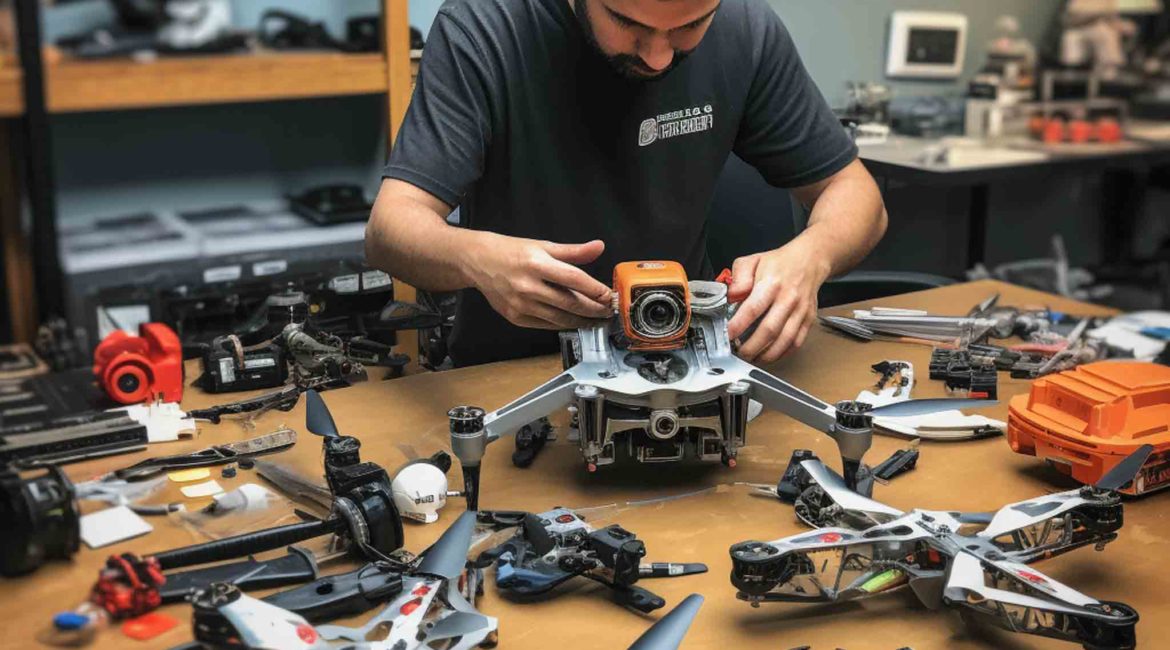Drones have become increasingly popular in various industries and recreational activities. Whether you are using a good camera drone for aerial photography, videography, surveillance, or just for fun, proper maintenance is crucial to keep your unmanned aerial vehicle (UAV) in top shape. In this article, we will guide you through the essential steps of drone maintenance to ensure optimal performance and longevity.
Pre-flight Inspection
Before every flight, it is essential to conduct a thorough pre-flight inspection of your good camera drone. This includes checking the physical condition of the aircraft, inspecting the propellers for any damage or wear, ensuring the battery is properly connected, and verifying the functionality of the controller. By performing these checks, you can identify any potential issues and address them before takeoff.
Battery Maintenance
The battery is a crucial component of your drone. To maintain its longevity and optimize performance, follow these battery maintenance tips:
- Always use the manufacturer-recommended charger and follow the instructions provided.
- Avoid fully depleting the battery or overcharging it.
- Store the battery in a cool, dry place and avoid exposing it to extreme temperatures.
- Regularly check the battery’s health and performance using the drone’s software or dedicated battery monitoring tools.
Propeller Care
The propellers are responsible for the drone’s stability and maneuverability. Proper propeller care is essential for safe and efficient flights:
- Inspect the propellers before each flight for any signs of damage, such as cracks or chips.
- Ensure the propellers are securely attached and tightened.
- Clean the propellers regularly to remove any debris or dirt that could affect performance.
Camera and Gimbal Maintenance
If your good camera drone is equipped with a camera and gimbal, proper maintenance is necessary to capture high-quality footage:
- Keep the camera lens clean and free from smudges or dirt.
- Inspect the gimbal for any signs of damage or misalignment.
- Calibrate the gimbal as per the manufacturer’s instructions to ensure stable and smooth footage.
Software Updates
Regularly updating your good camera drone’s firmware and software is crucial for improving performance, adding new features, and fixing any bugs or vulnerabilities. Check the manufacturer’s website or use the dedicated app to stay up to date with the latest updates.
Storage and Transportation
Proper storage and transportation of your micro four thirds drone are essential to protect it from damage:
- Store the drone in a protective case or bag to shield it from dust, moisture, and impacts.
- Keep the micro four thirds drone in a dry and temperature-controlled environment.
- When traveling with your micro four thirds drone, secure it properly to prevent any movement or collisions during transportation.
Cleaning and Dust Removal
Dust and debris can accumulate on your drone’s components, affecting its performance and potentially causing damage. Here’s how to clean your drone effectively:
- Use compressed air or a soft brush to remove dust from the body, motors, and propellers.
- Use a microfiber cloth or lens cleaning solution to clean the camera lens and sensors.
- Avoid using excessive force or harsh cleaning agents that could damage the drone.
Flight Log and Data Analysis
Keeping a flight log is beneficial for tracking your drone’s performance and identifying any recurring issues. Additionally, analyzing flight data can help you optimize flight settings and identify any abnormalities or trends.
Motor Maintenance
The motors are the powerhouse of your drone, and proper maintenance ensures their longevity:
- Inspect the motors for any signs of wear or damage.
- Lubricate the motor bearings as per the manufacturer’s recommendations.
- Avoid flying the micro four thirds drone with damaged or unbalanced propellers, as it can put unnecessary strain on the motors.
Controller Care
Maintaining your micro four thirds drone controller is essential for a seamless flying experience:
- Keep the controller clean and free from dirt or debris.
- Check the batteries in the controller regularly and replace them when necessary.
- Update the controller’s firmware to ensure compatibility and optimal performance.
Avoiding Extreme Conditions
Flying your drone in extreme weather conditions can pose risks to both the drone and its operator. Avoid flying in strong winds, rain, or excessively hot or cold temperatures to prevent damage to the drone and maintain safe operation.
Troubleshooting Tips
In case of any issues or malfunctions, here are some troubleshooting tips to consider:
- Restart the drone and controller.
- Check the connections and cables for any loose or disconnected components.
- Consult the manufacturer’s manual or online support resources for specific troubleshooting guidance.
Common Maintenance Mistakes to Avoid
To ensure effective professional drone maintenance, it’s important to avoid these common mistakes:
- Neglecting regular maintenance checks.
- Overlooking firmware and software updates.
- Failing to clean the professional drone regularly.
- Ignoring warning signs or abnormal behavior.
- Disregarding the manufacturer’s instructions and guidelines.
The Importance of Professional Maintenance
While regular maintenance can be performed by professional drone owners, it is advisable to seek professional maintenance periodically. Professional technicians have the expertise and tools to conduct in-depth inspections, diagnose hidden issues, and provide specialized maintenance services to keep your drone in top shape.
Proper maintenance is vital for keeping your professional drone in optimal condition and ensuring safe and enjoyable flights. By following the outlined maintenance practices, conducting regular inspections, and addressing any issues promptly, you can extend the lifespan of your UAV and maximize its performance.





